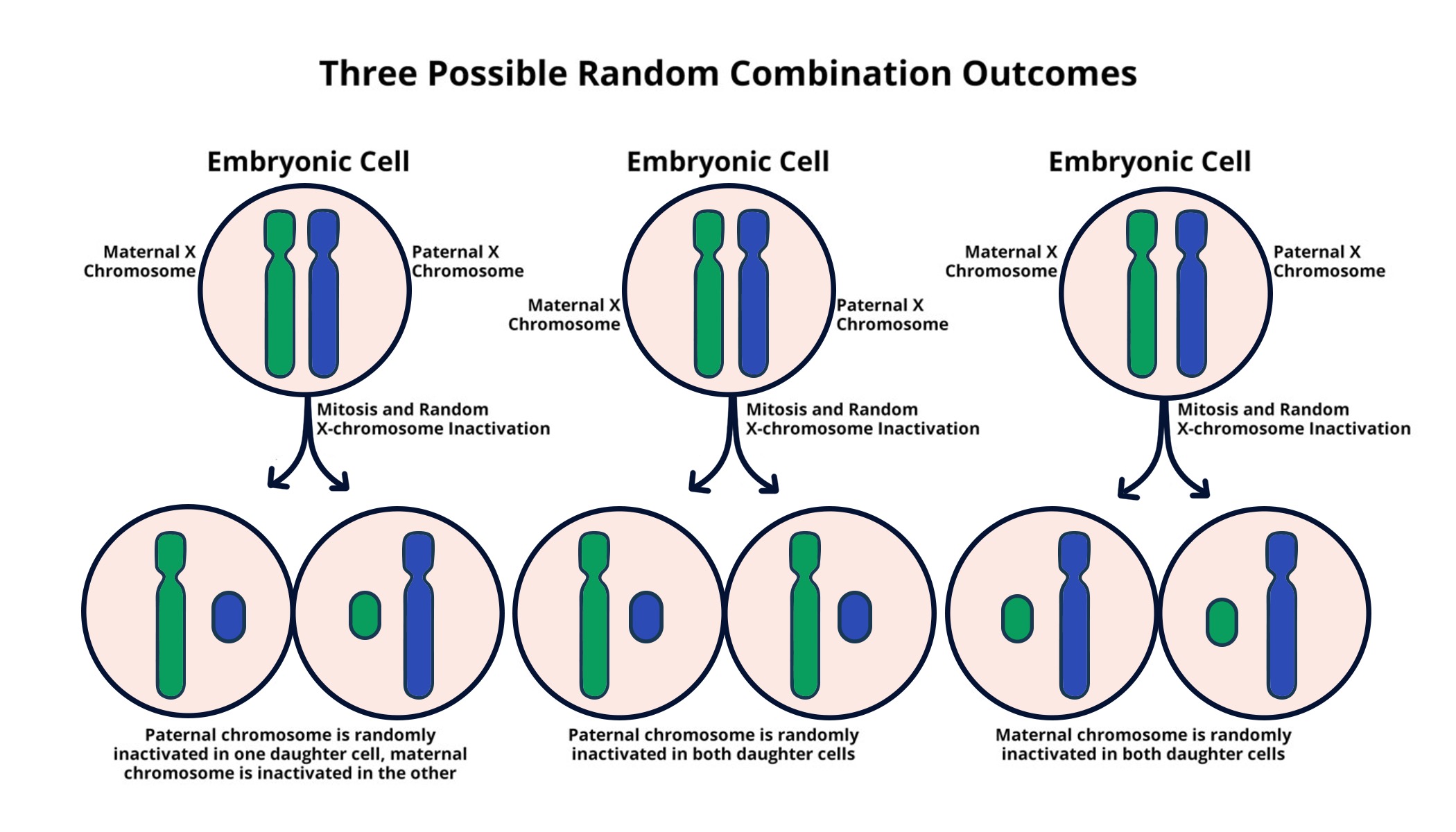The preborn baby’s sex is established at conception. If the baby gets an X chromosome from her father, she is female; if the baby gets a Y chromosome from his father, he is a male. The mother will always give her baby an X chromosome because she has two X chromosomes herself. Each cell only needs one copy of the X chromosome, but females have two X chromosomes. Therefore, in females, when the embryo has 700 to 1000 cells, around 9 days after conception, each individual cell will randomly inactivate and not use one of its X chromosomes in a process called X-inactivation.1 For each cell, it is equally likely that the X chromosome from the mother or the father will get inactivated. Therefore, some of the cells will have an active X-chromosome that came from the child’s mom and some of the cells will have an active X-chromosome that came from the child’s dad.
Some disorders, like color blindness and hemophilia, are controlled by genes on the X-chromosome. If a boy gets an X-chromosome from his mother with the gene that causes a sex-linked disorder, he will have the disorder because he will not get a healthy copy of the gene from his father, who gave him a Y-chromosome. However, if a girl gets an X-chromosome with a gene that causes a sex-linked disorder, she will likely not show any traits of the disorder because she also got a healthy copy of the gene from her father, and about half of her cells will express the functional gene after X-inactivation.2










